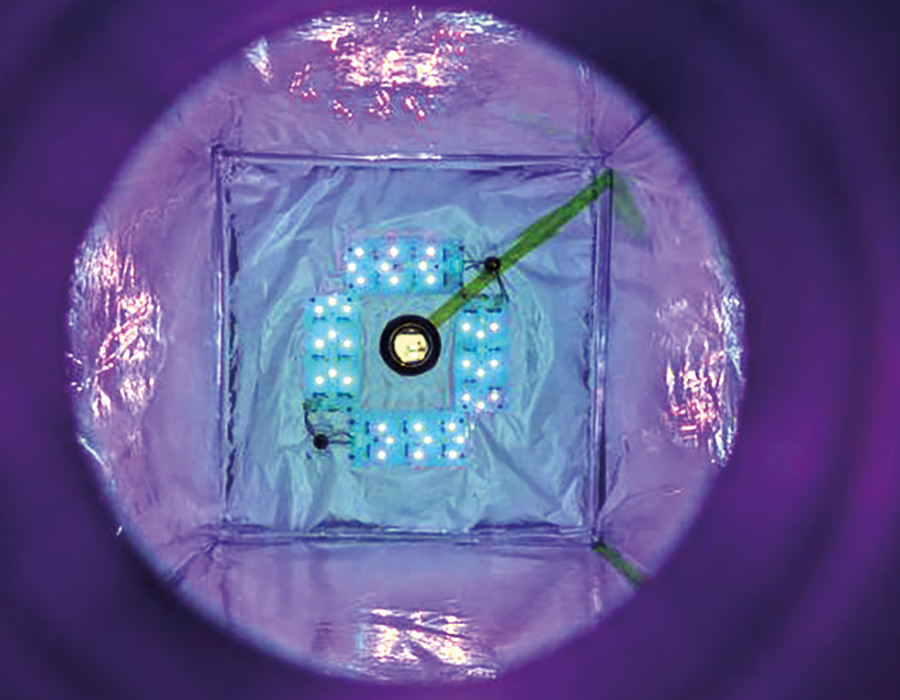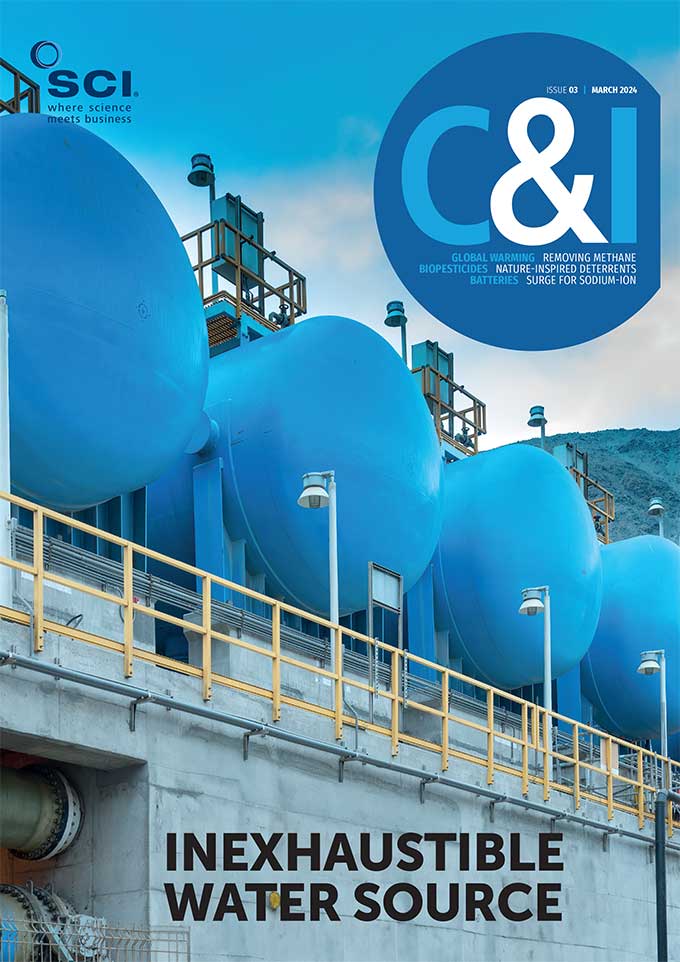BY LOU READE | 15 MARCH 2024
Cutting CO2 emissions is a central plank of policies bent on curbing global warming. But with 86 times the global warming potential, methane gas is also easier and cheaper to remove, Lou Reade reports
Climate scientists – and many governments – agree that removing atmospheric CO2 is the most effective way of mitigating climate change. This has led to a huge worldwide effort in decarbonisation. However, a Italy’s University of Udine lesser-known strategy to keep global warming under control concerns another greenhouse gas (GHG): methane. A programme called the Global Methane Pledge (GMP) aims to cut emissions of the gas by 30% by 2030, compared with 2020 levels. The logic is that, while methane is a far more potent GHG than CO2, it can be controlled with relative ease – and at less cost. Reducing methane in the short term could have a significant effect on warming, allowing more time to solve the trickier challenge of decarbonisation. A number of research projects – in areas including energy policy, catalysis and agriculture – are all playing a part.
Warming potential
According to the International Energy Authority (IEA), natural sources of methane, such as wetlands or melting permafrost, account for about 40% of global emissions. Human activity from three main industries – agriculture, energy and waste – makes up the other 60%. Within this, agriculture accounts for 45%, energy 40% and waste around 5%.
While methane stays in the atmosphere for less time than CO2, it has far higher global warming potential (GWP). Over 20 years, it has around 86 times the potency of CO2 – meaning 1t of methane is equivalent to 86t of CO2. In addition, methane affects air quality because it is involved in creating ground-level ozone. Focusing on methane emissions from oil and gas operations is critical, according to IEA. Firstly, because it is the largest source of emissions from the energy sector; and secondly because this reduction can be performed cost-effectively. A 2023 IEA report, The imperative of cutting methane from fossil fuels, says: ‘Methane abatement in the oil and gas industry is one of the cheapest options to reduce greenhouse gas emissions anywhere in the economy.’
The report notes that abatement measures – such as leak detection and repair, and the installation of emissions control devices – are already commonplace. In addition, the cost of implementing these measures is typically less than the value of the extra gas that can be captured and sold. ‘We estimate that 30% of the 120m t of methane emissions from fossil fuel operations today could be avoided at no net cost,’ say the report authors.
Regulation gap
One reason for high methane emissions is a lack of relevant laws. Researchers from Queen Mary University of London (QMUL) in the UK have found that only 13% of global methane emissions are currently covered by any kind of regulation.
‘Methane reduction is still seen as a choice, rather than a necessary step – alongside CO2 reduction – to combat global warming,’ says QMUL’s Maria Olczak, lead author of the study in One Earth (doi: 10.1016/j.oneear.2023.04.009). ‘With so many sources, there needs to be stronger social support and the political will to act.’
While legislation to control methane emissions has existed for around 40 years, the issue has only recently moved to centre stage, Olczak says. ‘We knew that methane emissions were under-regulated, but the scale of the problem was not known. That’s why we focused on it.’
The study analysed hundreds of national, regional and international policies that directly regulate methane emissions. This includes policies such as those enacted by the US Environmental Protection Agency (EPA), but excludes rules governing gas safety, for instance. While 13% is ‘not much’, Olczak is confident of the figure rising in future. For instance, the EU is on the verge of introducing the EU Methane Regulation, which will control emissions from the energy sector. Olczak also expects South Korea, which recently developed a methane action plan, to introduce rules to control emissions. The US also has strong legislation to control methane emissions. ‘However, there is always uncertainty in the US, as a new administration can change the rules,’ Olczak says.
In addition, 50 energy companies, including 30 national oil companies, agreed at COP28 to reduce methane emissions to 0.2% of oil and natural gas production by 2030 and to end routine flaring. This commitment will be assessed using technology such as the UN’s International Methane Emissions Observatory (IMEO), which will monitor compliance using satellite data.
Speedier removal

Researchers at Copenhagen University have developed a photochemical reaction vessel that can remove small amounts of methane from air. Credit: Morten Krogsbøl
The main emitter of methane is the agricultural sector, and several measures are being evaluated to reduce emissions. Researchers at the University of Copenhagen, Denmark, for example, have recently devised a new method to speed up the breakdown of methane in air – a technique likely to find its first use in the agricultural sector.
‘Methane typically decomposes at a snail’s pace because it isn’t happy about reacting with other things in the atmosphere,’ says Matthew Johnson, a professor of atmospheric chemistry. ‘With the help of light and chlorine, we can trigger a reaction that breaks down the methane roughly 100m times faster than in nature.’
Johnson explains that the bulk of methane emissions come from ‘low-concentration’ point sources such as cattle barns. While methane concentrations above 4% can be ‘burnt off’ this is not possible at lower concentrations. Most human-caused methane emissions are below 0.1%, he says. ‘In practice, methane from these sources has been impossible to concentrate into higher levels or remove.’
To overcome this, the researchers have built a chamber, in which a chain reaction of chemical compounds breaks down the majority of the methane (Environmental Research Letters; doi: 10.1088/1748-9326/ad0e33 ). ‘In the study, we’ve shown the reaction chamber can eliminate 58% of methane from air,’ says Johnson. ‘We’ve since improved the results, so the reaction chamber is now at 88%.’
In the reaction chamber, UV light catalyses the breakdown of chlorine gas into chlorine radicals. Each radical extracts a hydrogen atom from a methane molecule, to form hydrochloric acid, which is recycled. Each remaining CH3 radical then decomposes into CO2, CO and H2 – as it does in nature. The university has created a spin-out company called Ambient Carbon to commercialise its methane eradication photochemical system (MEPS). The first application of the technique is likely to be in livestock barns. The researchers are ready to build a protype system in a 40ft shipping container – a larger version of the current lab-based reaction chamber. The system could be used as a ‘methane cleaner’ when connected to a livestock barn’s ventilation system.
In future, it might also be applied to other methane-generating applications such as wastewater treatment and biogas plants. As part of the study, the researchers measured how much methane leaked from these types of facilities. They found methane concentrations of around 50ppm in cattle barns, and around 300ppm in wastewater treatment plant ventilation systems. Following lab-scale tests, the researchers intend to build and test a larger field prototype in these environments – before scaling up to a full-size pilot.
‘Denmark is a pioneer when it comes to producing biogas,’ says Johnson. ‘But if just a few percent of the methane from this process escapes, it counteracts any climate gains.’
Methane oxidation
Meanwhile, researchers from Spain and Italy have developed a catalyst that suppresses methane emissions more effectively in applications such as catalytic converters in cars. The palladium-platinum catalyst works by accelerating the oxidation of methane by air. This is typically achieved using palladium nanoparticles supported on ceramic oxides. However, this oxidation reaction is stopped by the presence of water vapour during natural gas combustion. The newly patented catalyst was synthesised by mechanical milling, which is critical to its activity. The researchers found that the method led to ‘unique’ structures that permitted higher methane conversion and greater stability than traditional structures.
‘In particular, we’re studying the crystalline and electronic structure of the catalysts under reaction conditions and at working temperatures,’ says Núria Jiménez Divins, a postdoctoral researcher at Spain’s Catalonia Polytechnic University (UPC) and lead author of the study (Nature Communications; doi: 10.1038/s41467-022-32765-4). ‘It is very important to understand the dynamic structure of the catalysts.’
The other research partners were Italy’s University of Udine and the Alba Synchrotron in Spain. The team used three synchrotron techniques – X-ray diffraction, X-ray absorption and ambient pressure photoelectron spectroscopies – to probe the nature of the catalyst while operating. This showed that palladium and platinum oxidation states play a key role in methane removal.
‘The unique structures attained by milling are key for the catalytic activity and correlate with higher methane conversion and longer stability,’ say the researchers, adding that the catalyst might also be used to reduce methane emissions from natural gas domestic boilers and turbines.
‘Our work allows us to design new generations of more active and stable catalysts,’ says Jiménez Divins. ‘In this way, we can help to mitigate the effect of methane emissions.’
Sea systems

Bladderwrack in the Baltic Sea absorbs CO2 – but also emits methane, say Stockholm University researchers Credit: Stockholm University Baltic Sea Centre
Coastal ecosystems such as mangroves, salt marshes and algae are seen as important natural environments to mitigate climate change, because they can store large amounts of CO2 from the atmosphere – so-called ‘blue carbon’. Recently, scientists in Sweden found that one type of algae, bladderwrack, may be less effective than first thought because it also emits large amounts of methane (Nature Communications; doi: 10.1038/s41467-022-35673-9).
‘We were surprised that methane was emitted from the bladderwrack,’ says Christoph Humborg, Scientific Director of Stockholm University Baltic Sea Centre and study co-author. ‘It grows on hard substrates and not soft sediments, where methane is normally produced.’
Humborg and co-researchers found that the algae formed pockets of sediment that housed methane-forming microorganisms called archaea. They measured greenhouse gas fluxes between the water surface and atmosphere off Askö, an island in the Baltic Sea, over one year, using a water equilibration gas analyser system. The measurements showed that mixed vegetation and bladderwrack forests absorbed large amounts of atmospheric CO2. The amount varies over the year, but overall uptake from the atmosphere across the bladderwrack habitats added up to 0.52t CO2/hectare/year. However, the methane emissions effectively reduced this to 0.38t – equivalent to around 28%.
‘These environments are net carbon sinks – just not as large as has been suggested,’ says Humborg.
The next phase of research will explore whether the methane emissions are affected by eutrophication – due to nutrients such as phosphorus and other organic matter in the sea. ‘Our measurements were done in situ in the Baltic Sea, which is affected by eutrophication,’ Humborg says. ‘A less eutrophic ecosystem – with less organic matter accumulation and less filamentous algae growth – could produce less methane.’
Helping the Baltic Sea recover from eutrophication may therefore improve the blue carbon potential of this habitat, he says. While decarbonisation will remain the main pillar in fighting climate change, a short-term focus on methane emissions could help to put the brakes on rising temperatures.
Gas guzzlers
It’s well known that ruminants such as cows are a major source of methane, with their gassy digestive systems contributing an estimated 6% of all anthropogenic emissions. Now, researchers at China Agricultural University in Beijing have summarised how changes in nutrition might reduce this. They say that methane production pathways within the ruminant can be modified through manipulation of either nutrients, microbes or chemicals (Frontiers of Agricultural Science and Engineering; doi: 10.15302/J-FASE-2023513).
Many researchers have proposed potential reduction strategies. One project, cited in the paper, showed that a 6% increase in lipids added to cattle feed reduced methane emissions by 20% over 24 hours. This is partly because medium-chain fatty acids have toxic effects on the methanogens and protozoa that generate the methane.
Gut microbes can also be modified with selected ionophores – additives commonly used in animal feed – with a potential 5% reduction in methane output. Adding nitrate to the diet has also been shown to cut methane production by up to 22%, while natural compounds such as tannins, fruit peel pellets and seaweed may also have beneficial effects, according to the researchers.




